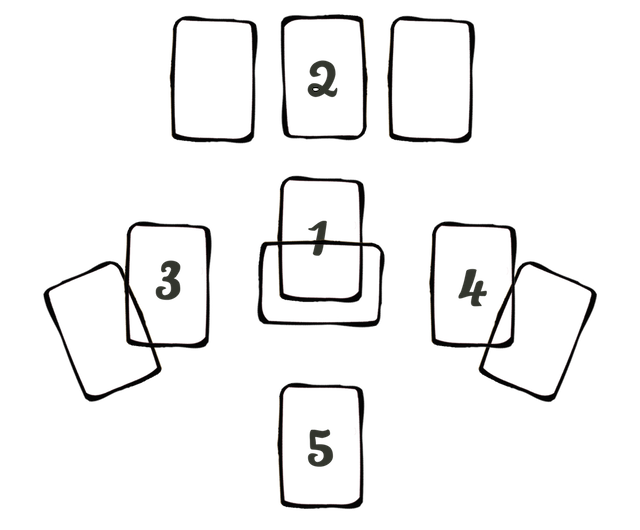
Tarot card numbers play an important role in a reading. They add detail and precision to your readings. Different Tarot decks may have different symbolism. Knowing the positive and negative aspects of a Tarot card number can help you make better decisions and make more accurate predictions. Below are the five most common tarot card numbers, along with their symbolism.
Positive aspects of tarot numbers
The 17th tarot card is a sign of positivity, hope and inspiration. This is a great moment to make positive life changes and start new projects. This card is associated luck and good fortune. Take advantage of this auspicious opportunity and trust your intuition.
The positive aspects of the World card include success, execution and self-awareness. The World card is also associated with personal growth and expansion. It's one of the most powerful cards in the deck, representing success and achieving goals. But be careful not to get too carried away with the world's positive aspects - the positive aspects aren't always so good.

Death is often associated to the number 13. Death is associated with upheaval. The number thirteen also represents the Karmic Debt Number. It means that you have to learn a spiritual lesson and move forward.
Symbolism and the number of tarot deck cards
Symbolism allows you to better understand the numbers on your tarot deck and how they are related to the person who is reading them. Three has a lot to do with energy and can represent a lot of things in your life. This number can also signify that you are about to experience something major.
13 is associated to change and the Death card. A Karmic Debt Number of 13 means you have a lesson to learn and need spiritual growth. This will enable you to read tarot more accurately by understanding the meanings of these numbers.
Three is associated with optimism, joy, creation, community, and joy. Three is also the number for the Empress card. It is also known by the name Mother of Creation. The Emperor card has a number of four and is associated stability, contentment, security, and peace.

Negative aspects to tarot card numbers
The positive and the negative aspects of Tarot cards numbers are both present in both their card meanings and positions. The card you are currently reading could reveal your strengths and weaknesses as well as your successes and obstacles. This is why it is important that you understand the context before reading the card. An example: A Death card in the Three of Swords' position might signal an unbreakable breakup. However, a Tower or Tower card preceding the Six of Wands could indicate a breakthrough.
This is not the only thing that cards have, even "good" ones, but there are also negative aspects to them all. This means that although the Sun card is considered one of the best Tarot cards, it can also represent a self-centered person or an overconfident person. However, the Devil card can be used to represent sexuality, pleasure, sexuality, and passion.
FAQ
What are good hobbies for seniors?
Senior citizens should have fun activities that they enjoy doing. Senior citizens should keep active through participation in physical and sports activities.
They might be interested in joining clubs that offer similar interests. As they age, this will help them feel less alone.
Senior citizens should keep up to date with the latest trends. You could, for example, follow the latest trends in fashion, literature, and music.
What are the competitive hobbies?
There are many competitive sports, including running, swimming and cycling, as well as golfing, tennis and other activities.
They're often enjoyed by people who are active and want to socialize.
If your hobby involves physical activity, you will likely find other people who share it.
You might consider joining a group or club that meets regularly to play together in sports.
Participating in group games, which involve playing alongside others, is another option.
These include cricket, football, netball, hockey, netball, soccer, rugby, cricket, rugby, batsball, hockey, volleyball, badminton squash, handball and table tennis.
There are many types and levels of competition.
Some competitions are only for recreational purposes.
Others are intended to test competitors' skill.
Yet, there are others that reward exceptional performance.
In these cases, winners receive prizes.
Other competitions aim to assess the strength and endurance of competitors.
These are called endurance events.
For example, marathon races, triathlons, Ironman Triathlon, etc.
Athletes train hard before they compete in these events.
They will follow a strict training program to prepare themselves mentally and physically.
They may need to spend some time out of their home for preparation.
It's important not to forget that not all athletes are able to compete in every type event.
Where can you find free resources that teach more about hobbies and interests?
Many websites are dedicated to helping people find new hobbies.
These are our top picks:
www.trythisathome.com - This site provides a list of over 100 different hobbies. It also includes information on how to get started on each one.
www.hobbyfinders.org: This website offers thousands of activities you can search by skill level, location, or interest.
www.indiebazaar.co.uk - IndieBazaar is an online marketplace designed specifically for independent artists and musicians. You will find hundreds of products that range from artwork to music gear on the site.
www.pinterest.com/explore/hobbies - Pinterest is a social media network that lets users "pin" images they find interesting onto their boards. Boards let users organize what they like into particular categories.
www.reddit.com/r/Hobbies Reddit is another social networking platform that allows users to link to articles, videos or other content. Users can vote on the posts they consider most valuable.
What is a collection hobby?
Books, movies music, comics and video games are some of the most popular collections.
Collect stamps, coins, cars, dolls and action figures as well as art supplies, tools, jewelry, watches, gadgets and furniture.
I believe you get the idea.
What are educational hobbies?
An educational hobby involves a sport or other activity where you can learn something from doing it. This could be anything you want, such as playing sports or learning how to play an instruments.
It should be enjoyable and have fun. It doesn't have to be done all the time. However, if you get bored of it, you should think about other things you can do instead.
You should also make sure that you are not spending too much money on these activities. It could end up costing your more than it's worth.
What are the chances of making money with my hobby?
Many hobbies can bring in extra income.
If you're passionate enough about your hobby, you may decide to sell items related to it.
A website might be a good idea if your hobby is collecting stamps.
You can also make extra income by selling and buying stamps.
Another option would be to create a YouTube channel where you talk about your hobby.
This allows you to share what is important to you with others, and possibly generate additional revenue through premium content.
Statistics
- I am 100% biologically a woman (discover.hubpages.com)
- Almost 80% of people claim to have no hobby. (hobbylark.com)
- A new survey by Pew Research Center of teens ages 13 to 17 finds that 36% of girls feel tense or nervous about their day every day; 23% of boys say the same. (pewresearch.org)
- The Role of the Mind in Sex, Dating, and Love: Men in the “humor” condition received phone numbers from 42.9% of the female participants and were refused 57.1% of the time. (time.com)
- This 100% accurate personality-analyzing hobby quiz discovers your passion based on your characteristics. (quizexpo.com)
External Links
How To
How to start gardening
Gardening has been around since the dawn of agriculture. It requires patience, persistence, and determination. First, choose a place where you would like to grow food. It could be large land, or just your backyard. Next, you will need to decide which type of plants are best for you. Are you more fond of flowers or vegetables? Some people enjoy growing herbs while others love raising livestock such as rabbits. Before you decide on what type of crops to plant you need to take into consideration how much space you have. If you live in a climate that experiences cold winters, then you might decide to grow fruits or berries as they do well in colder climates.
After choosing what you want to plant you need to prepare your soil. It is vital that your soil is prepared properly to determine whether or not your plants will thrive. Good quality soil contains organic matter that helps feed your plants' roots. Organic matter can include leaves, twigs and grass clippings as well as manure and compost. After you have prepared the soil, you will need to add nutrients. The type of plant you intend to grow will dictate the amount of nutrients you need. You can calculate these values online with a fertilizer calculator. Many fertilizers are on offer, so make sure that you know which one you are buying.
After you have prepared your soil, and added the correct nutrients, you will need to wait until your seed germinates. This can take anywhere from two weeks to three months depending on where you live and how warm it is. After your seeds sprout, it is important to water them frequently. Watering your plants too little or too often can cause problems. You should ensure that your plants get enough water at regular intervals. Avoid overwatering. Overwatering could lead to root rot as well as fungal diseases. Keep in mind that plants are more thirsty during summer than winter. Keep in mind that certain plants may need to be dried after being watered. For example tomatoes should be kept slightly moist and not wet. They won't tolerate soggy soil. After the plants have finished flowering they must go dormant. Plants go dormant when they stop producing new growth and instead store energy for next year's harvest. Dormancy is when the plant stops sending signals back to its roots for food production. The plant continues to store energy during this time. However, if the temperatures drop below freezing and there isn't enough sunlight, the plant will go to sleep.
If you live in an urban environment, you may find yourself limited in the kinds of plants that you can grow. Concrete sidewalks and roads, as well as parking lots, are common in urban areas. This blocks sunlight from reaching the ground. Concrete absorbs sunlight, which prevents the soil beneath from getting enough sun exposure. Many plants can't thrive in urban environments because they lack sunlight. However, many plants can still thrive in urban environments. Many perennials, trees, and shrubs are able to adapt to urban living. Many annuals are also possible to grow indoors in containers. You can bring greenery inside your home all year round, regardless of the weather.
Now that you have decided where to place your garden, chosen what you will grow, and prepared your soil, you are ready to plant!